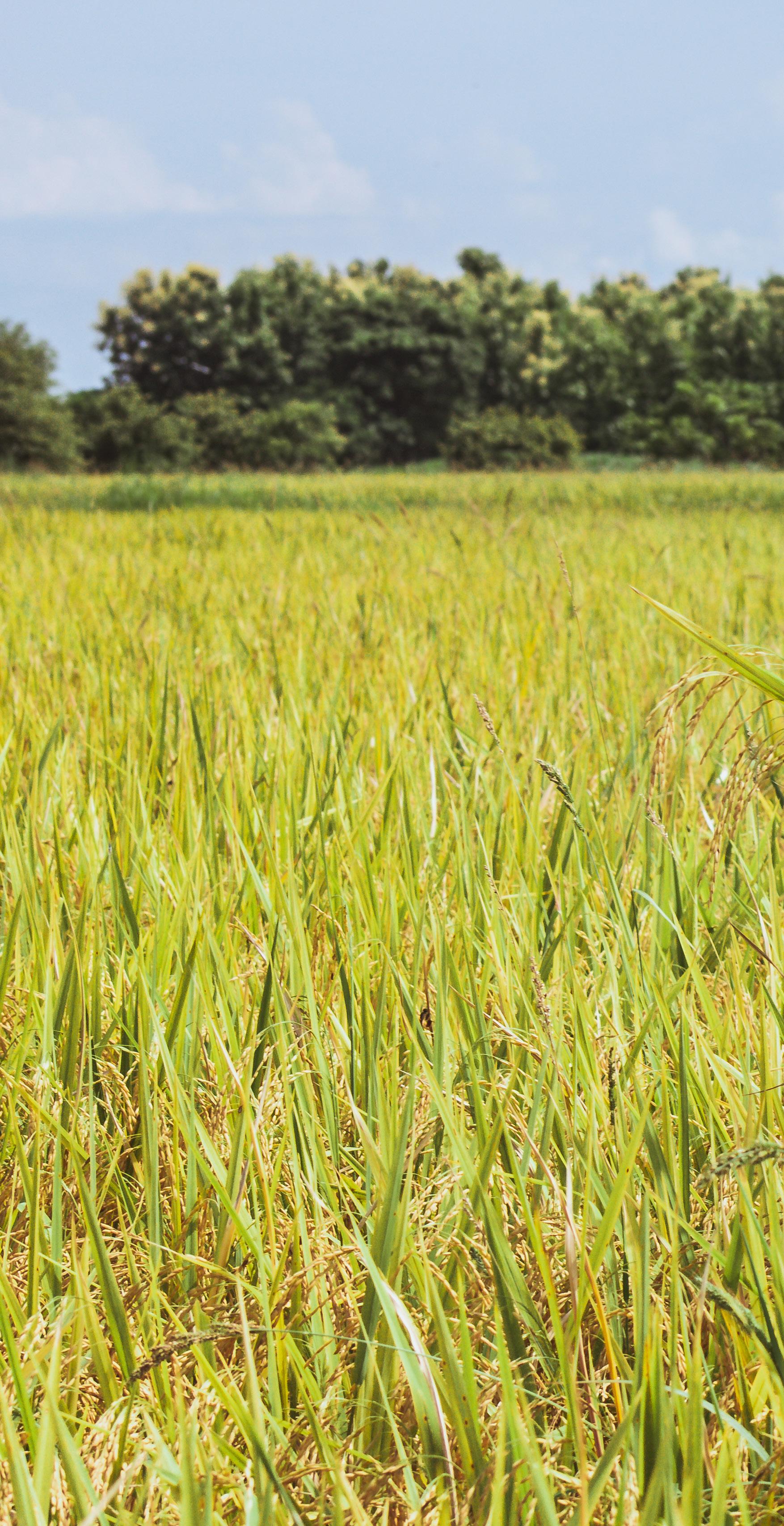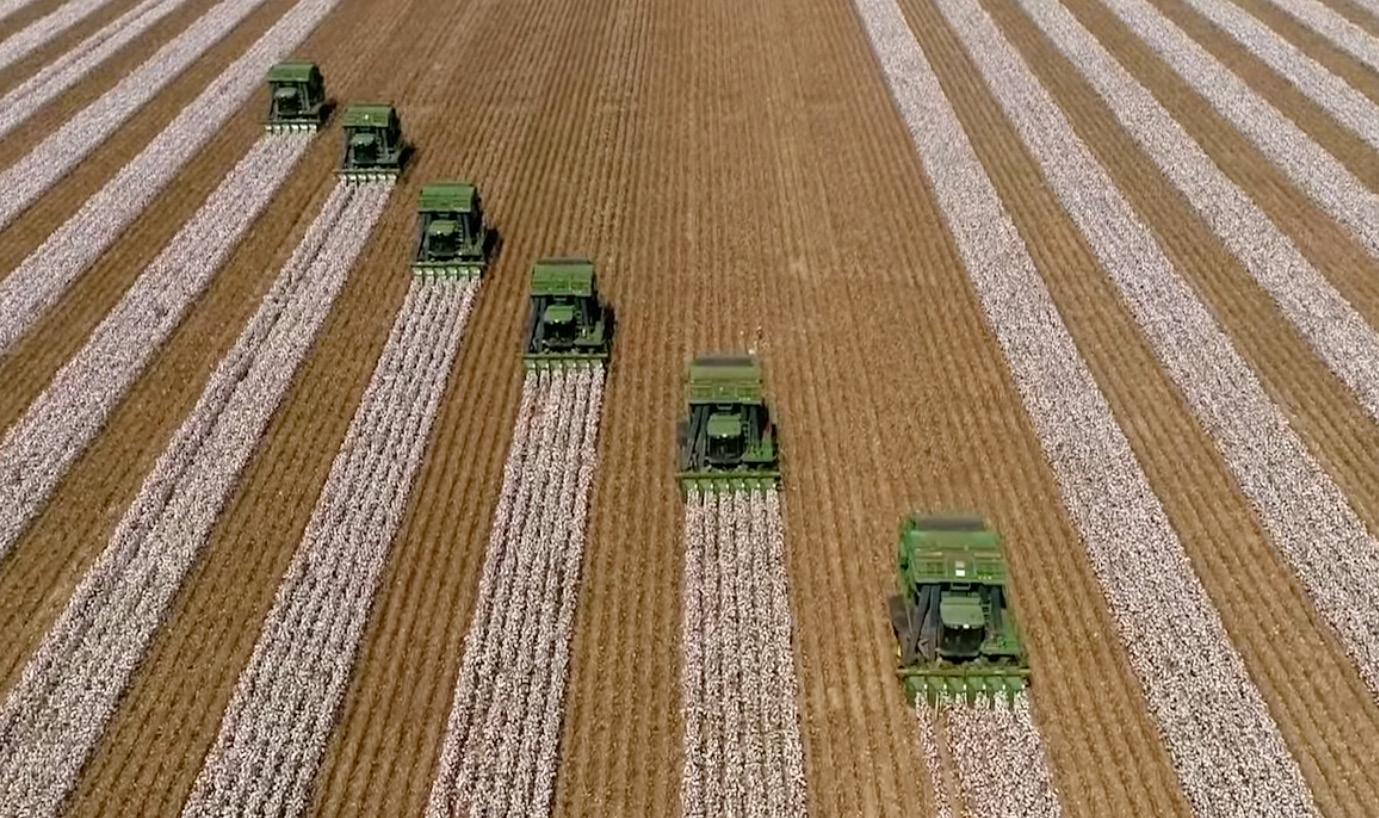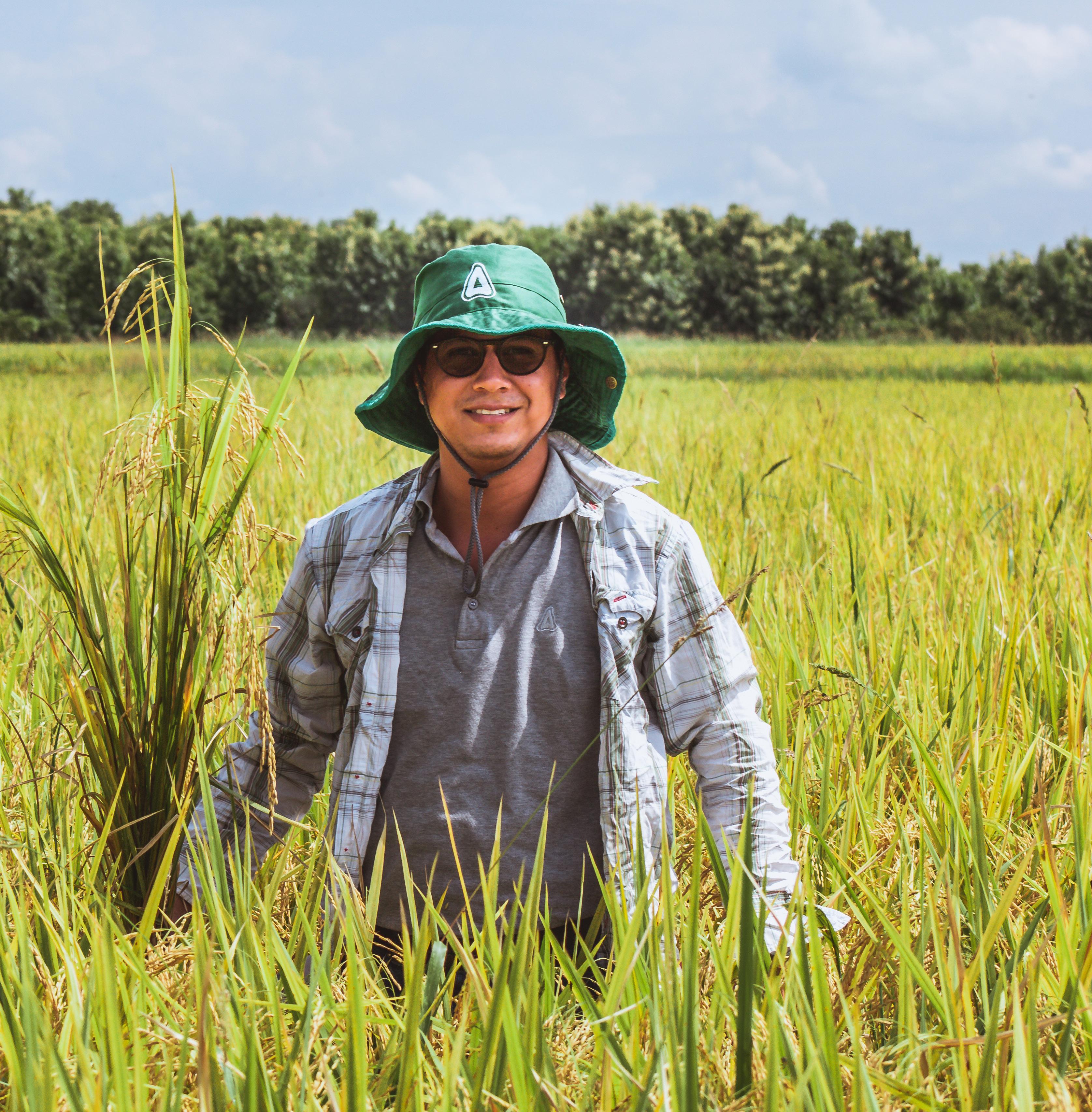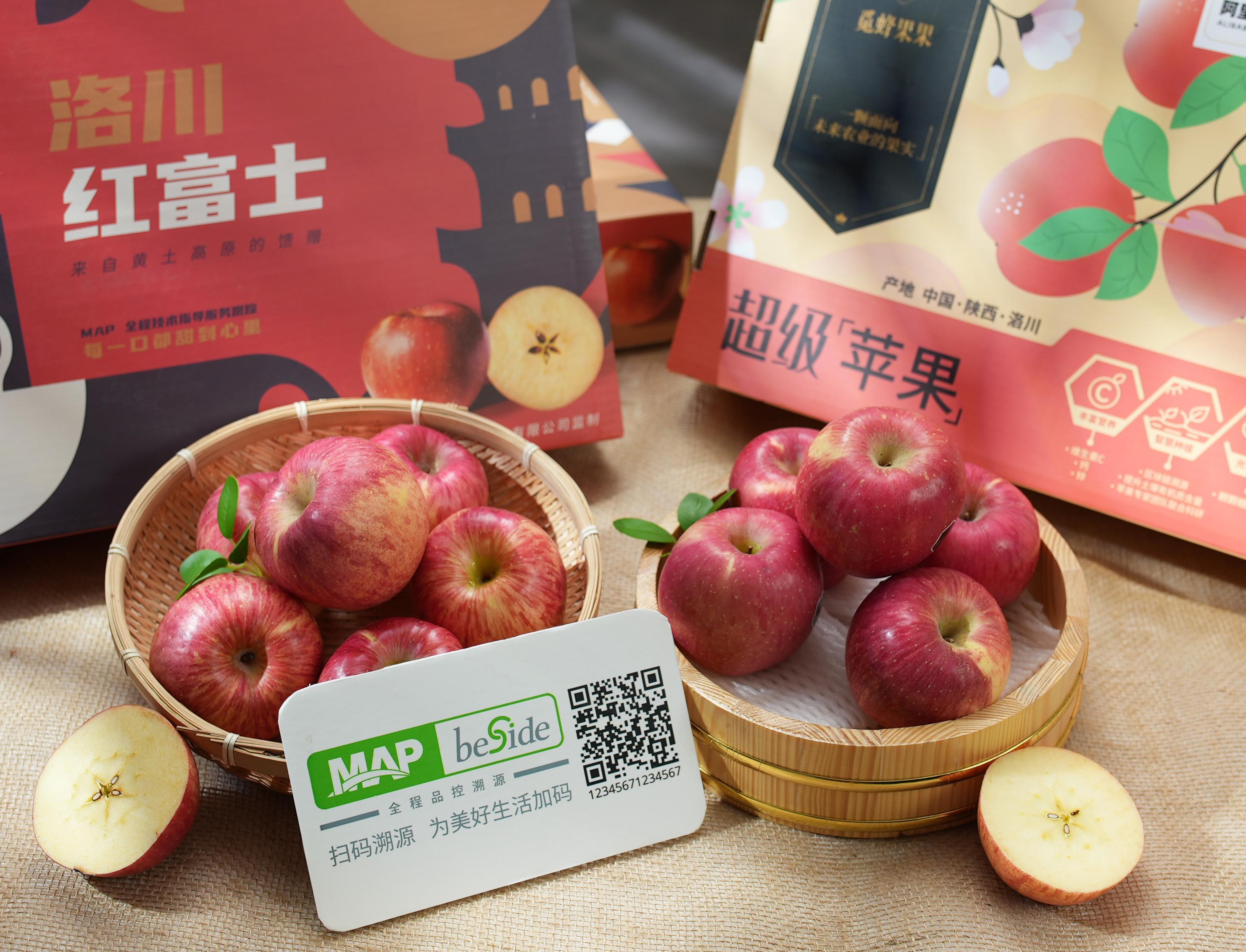DIGITISING AGRICULTURE TO GROW MORE WITH LESS






AgTech is a sector unlike any other. It involves the digitalisation of a lot of physical assets and typically spans over very vast, remote environments, which collectively have a huge role to play in the sustainability and climate agenda.
At Syngenta, they thrive off innovation, offering solutions to fight climate change and tackle the challenge of feeding the world in a sustainable manner.
As the Group Chief Information and Digital Officer (CIO and CDO) at Syngenta Group, Feroz Sheikh is guiding the organisation's entire digital transformation through technology.

AgTech and the key challenges it faces Syngenta’s mission is to help farmers improve their yield, increase their profitability and grow more sustainably. These three aspects are what define the mantra underpinning the company’s digital strategy. “We are actually counting on the role of technology in helping farmers to be able to achieve these goals,” says Sheikh.
“Some of our competitors, for example, are more focused around growing the adoption of their tools, increasing the acreage and capturing the data, whereas we look at the value of this data to help the farmers make better decisions and to help us make a better innovation available to the farmers,” he adds.
CIO and CDO Feroz Sheikh is helping transform farmers’ lives through AgTech and promoting nature positive, regenerative agriculture practices.

Sheikh explains that, in a typical season, the farmer has to make anywhere close to 100-150 decisions ranging from what seed variety to use, how are they going to plant it, how to protect their crop during the season and when to harvest, for example.
“Technology plays an increasingly important and relevant role to help the farmers make better decisions. There
is still a lot of untapped economic headroom in agriculture. We have algorithms that factor in elements such as soil characteristics, weather predictions, and seed variety and performance data from R&D, which help make recommendations so they can make better business decisions as a grower, ” says Sheikh.

Sheikh sees a future where machines autonomously inspect fields on behalf of farmers for signs of plant stress and crop protection decisions. For instance: “You could have machines that are moving in the field, inspecting the condition of the crop using cameras and computer vision, and then taking application decisions autonomously.”
Sheikh also references drones, which are deciding whether to harvest the fruit in an orchard; taking a picture of an apple and determining if it is ready to pluck it from the branch or not.
“FUTURE TECH PLAYS AN INCREASINGLY IMPORTANT AND RELEVANT ROLE TO HELP THE FARMERS”

LOCATION: BASEL, SWITZERLAND
Feroz Sheikh is the Chief Information and Digital Officer for Syngenta Group. He is an experienced technology leader with more than 22 years of experience. As an entrepreneur, he has founded multiple technology-driven startups and took them to an exit. Prior to joining Syngenta, he was engaged in helping making education accessible to 200 million children in India as a philanthropic mission.
At Syngenta, he is responsible for all IT and Digital strategy for the Group, where he is driving Syngenta’s mission of ensuring food safety while taking care of the planet by using technology.
Feroz is a thought leader, shaping industry standards, creating open-source software and ecosystems. He is a Board Member and Vice-chair of AgGateway, a non-profit consortium of 200+ companies in agriculture and food industry globally, and an advisor to multiple start-ups.

He is an alumnus of Delhi College of Engineering and Indian Institute of Management, Kozhikode, both premier institutes in India.



Syngenta is a key client within the DXC Partner Ecosystem: Together we enable farmers with solutions for sustainable agriculture to meet the world’s demand

Syngenta’s mission to innovate sustainable agricultural solutions that enable the world’s farmers to feed our ever-growing global population cannot be achieved without the application of technology. Syngenta looks for like-minded collaborators – agile, forward-looking and effective. DXC has been working with Syngenta for more than 20 years, and in that time the two companies have built a powerful synergy.
“DXC/Luxoft has established itself as Digital Transformation Partner for Syngenta on its journey to become a leader in Digital Agriculture,” says Global Account Executive Urs Geissmann. “We support Syngenta in several areas linked to DXC/Luxoft offerings. Syngenta regards us as a thought leader for the proactive way we have proposed ideas and applications applicable to agriculture. They find DXC/Luxoft an attractive partner because of our digital expertise in Life Sciences.”
This is endorsed by Sunil Menon, who is a Managing Partner leading the Life Sciences business at DXC. “The urgent challenges facing the agriculture industry require the adoption of innovative digital solutions and digitally-driven business transformation.
DXC/Luxoft is very much aligned with Syngenta and its drive to keep the farmers as its central focus, keenly aware of their needs and developing the digital ecosystem that will transform their industry. We are members of AgGateway where we implemented and operate some essential platforms and solutions used to share data and facilitate interoperability.”
DXC/Luxoft adds value to Syngenta through its deep experience of multiple verticals, says EVP of Digital Engineering Sam Mantle. “We built a strong level of trust between our organisations. The possibilities for the application of technologies in agriculture and food production are endless: a win for DXC/Luxoft, a win for Syngenta, and a win for humanity.”
Speed of change will differentiate winners in the Agritech ecosystem, building digital solutions at scale that enable DXC/Luxoft’s clients to achieve their ambitions.


In the next few decades, the world must overcome unprecedented challenges – challenges too complex to be addressed by a single nation or organisation alone. The UN Global Food Security report highlighted that 250 million people worldwide are at risk of facing food shortage.
But what if great minds come together united in a passion for finding the best solutions of our time?
A tribe of visionaries, engineers, scientists, developers and makers from the finest agricultural companies in the world from start-ups, NGOs, universities, think tanks, from our partners and customers.
Together, we will form an unparalleled agricultural powerhouse of diversity, collaboration and innovation.
All this may sound like a sci-fi story, but it is happening around us. “You can gauge the impact of AgTech from the fact that it is predicted to soar to US$22.5bn in 5 years from the current US$9bn market size – a CAGR of 150%” says Sheikh.
Technological advancement in AgTech Syngenta has close to 180 million acres digitally connected to their tools. Growers

access these tools on their tablets or smartphones, or in-cab displays when they're out in the field, or they may have a desktop when they're in their control room, for example.
Looking at modern equipment that's in the field, such as the latest tractors and combines, Sheikh adds: “You have so much computational power that it's probably nothing short of a data centre on wheels!”

And, pushing the envelope a little further: “We get into the realm of IOT and sensors. Soil sensors, which are six inches below the ground, or weather stations out in the field – all connected to their farm management systems through wireless, wifi or Bluetooth BLE technologies that help them send the data they collect back to the servers.
Offering a different perspective to technology and digital adoption, the
Data-enabled

Discover how EPAM’s digital transformation solutions and self-built data lakes further Syngenta AG’s R&D in the agricultural science sector
Farming is the future. But, to weather the storms that lay ahead, that ever-useful tool, data, is essential. Step up, EPAM.
EPAM rethinks the software that supports R&D to:
• Build robust functional data foundations
• Connect all (R&D) data across functional data domains
• Use machine learning and predictive analysis to generate new insights
• Develop end-user applications that allow functional experts to utilise insights
Syngenta AG is a leading global agriculture technology company that sustainably assesses and restores soil fertility, protects crops and improves seed quality. A large part of the company’s work involves assessing seed product outcomes to inform future decisions but, to do this efficiently and effectively, an overhaul of its data analytics’ workflow was needed.
Data-enabled insights drive novel, augmented and targeted innovation to meet the changing needs of the future. As such, EPAM is responsible for operating multiple


cloud-based data lakes, data warehouses and interconnected analytical tools for Syngenta. Each Syngenta data lake is remarkable in that it captures, contains and processes vast amounts of data , helping to give Syngenta enormous potential to drive future agricultural innovation.
The data lakes cover Seeds and Crop Protection R&D spaces as well as an enterprise-wide Production, Supply and Commercial space. Via these data lakes, over 100 source systems and applications coalesce to provide data, with thousands of data extraction and transformation jobs providing millions of rows of data.
Meanwhile, in Research Chemistry, EPAM drives Digital Transformation to capture high-quality structured data from chemical reactions, to enable the transfer of chemical knowledge throughout the organisation. This helps Syngenta to make data-driven synthesis decisions and to build AI-powered workflows.
In phenotyping, genotyping and novel compound research, the ‘Big’ in ‘Big Data’ isn’t just a buzzword, it’s a reality – good news when the future of the world’s crop supply is in Syngenta’s hands.
 FEROZ SHEIKH CHIEF INFORMATION AND DIGITAL OFFICER, SYGENTA GROUP
FEROZ SHEIKH CHIEF INFORMATION AND DIGITAL OFFICER, SYGENTA GROUP
“THERE IS STILL ECONOMIC HEADROOM
AGRICULTURE THAT CAN BE UNLOCKED BY USE OF TECHNOLOGY”
pandemic accelerated that transformation for the industry.
“Simple things like having collaborations over a video call. Covid-19 accelerated the need to digitise that entire data collection value chain. Advisors are able to offer suggestions to growers without being out in the field. Our marketing events turned purely virtual, and we are now thinking about creating a virtual metaverse solution, where growers and industry partners can interact, share knowledge or attend a marketing event. Equally, internal seminars or conferences that we do within the company also went virtual,” says Sheikh.
“You could have the advisor sitting miles away from the farm, looking at a drone or satellite image and then making a recommendation to the grower on which part of the field they should scout,” he adds. “In terms of what happens in the value stream further after the harvest, this has also been accelerated by the transformation using digital systems.”
From field to fork, the entire supply chain accelerated the transformation from paperwork to digital systems, and from manual to autonomous processes.
Aiming for carbon neutrality and net zero Regenerative agriculture or nature positive farming is a key aspect of Syngenta’s global strategy; regenerative agriculture is an outcome-based farming approach that protects and improves soil health, biodiversity, climate and water resources while ensuring farm productivity. It consists of practices such as:
• Minimise soil disturbance (minimal or no tilling before planting)
• Use of cover crops to protect soil erosion

• Crop rotation and crop diversification
• Optimise synthetic inputs (fertiliser, pesticides)


“In R&D, knowledge and information are legacies… data needs to be stored and accessed in the right way. Benchling is critical in helping Syngenta capture and build on these learnings as a company.”
Benchling enables Syngenta’s teams to communicate and collaborate across multiple locations and functions more clearly and quickly, greatly accelerating the pace of their science. Since the beginning of the partnership, Syngenta reported a 48% improvement in ease of finding legacy data or protocols, a 72% increase in ease of sharing data across teams and a 79% improvement in quality of data capture.
The Syngenta Seeds business unit uses biotechnology alongside conventional breeding technologies to bring new characteristics into the seed varieties that farmers grow around the world. Seeds R&D has partnered closely with Benchling since 2020. According
to Charlie Baxter, who leads Traits, Regulatory, and Product Safety for Seeds, the group has seen a significant step-shift in how it leverages data.
“The efficiencies gained from the ability to record unstructured data accurately, learn from past experiments, collaborate globally, while all in a secure and compliant way, not only benefits the scientists, but the whole organisation”

Charlie Baxter, Head of Traits, Regulatory, and Product Safety.
Benchling has evolved the Seeds group’s ways of working as well, improving experiment planning by providing a more accurate view of milestones and dependencies, enabling new team members to upskill quickly by having a system of record to reference, and unlocking in-the-field optimization through mobile data capture.
Benchling is a key partner in the next era of science at Syngenta. Repeatable, high-probability results are crucial to their Seeds business strategy, and as the pace of innovation accelerates, so will the quantity of data output and the need to draw insights accurately and with speed. Benchling is foundational to the technological infrastructure that Charlie and team need to tackle these challenges and to collaborate more cohesively–both internally and with regulatory agencies around the world.
Learn more Watch our video

Biodiversity is declining at a precipitous rate, threatening our economy, societies, and shared natural environment. This decline has serious implications for agriculture, given farming’s reliance on biodiversity to sustain a healthy balance with nature and ensure the resilience of food production. However, to understand biodiversity, and how best to protect it, the world needs more on-the-ground, in-the-field data than is currently being captured. This information gap is the impetus for the Biodiversity Sensor Project crew, who built a lowcost, solar-powered, state-of-the-art motion-capturing system that would draw on artificial intelligence (AI) and machine-learning algorithms to identify and quantify most moving species — automatically, autonomously, reliably and at scale. Together with our partners IIT, Fraunhofer Institute, TDWG and Tumbling Dice, we invite the agriculture community, researchers, policymakers, and NGOs to join us in this journey to accelerate the accuracy of biodiversity measurements across our collective home, Earth. Here is a short preview of the biodiversity sensor :
FEROZ SHEIKH CHIEF INFORMATION AND DIGITAL OFFICER, SYGENTA GROUP“WHAT HAPPENS IN THE VALUE STREAM FURTHER AFTER THE HARVEST HAS BEEN ACCELERATED BY THE TRANSFORMATION USING DIGITAL SYSTEMS”



Artificial intelligence is the key to consistency in agriculture, but Capgemini believes natural crop changes are challenging long-term technology adoption
Artificial intelligence (AI) is reshaping the world in which farmers manage their crops. The industry is critical and, thanks to the intervention of new agriculture technology (agtech), consistency is highly achievable in comparison to the origins of farming, from which multiple methods arose.
AI and agtech are necessary for farmers to ensure that food sources can provide for a growing population under challenging market conditions. The global IT services and IT consulting provider Capgemini recognises that the industry faces many challenges, but that breaking down those barriers will result in more opportunities for the implementation of AI and data analytics in the industry.
In an ever-changing natural environment, technology still has its limitations. Highlighted by Kevin Potard, Tech Field leader in Agriculture for Science & AI at Capgemini, biology is one of the major challenges that impacts the response to

AI development in agriculture. Potard was involved in creating AI-capable crop mapping for more than 70 crop types in France with incredible success, enabling differentiation between wheat and barley. However, he explains that the year-on-year changes to climate and crops is tricky.
“We had to be able to differentiate wheat from barley on 15m resolution pixels. We succeeded in obtaining more than 98% of classification success. In this case, the biggest risk we identified is that it works well this year but not next year,” says Potard. “Indeed, from one year to the next, the plants do not behave exactly the same way, either because of the weather or the variety sown. We spent a lot of energy orchestrating our different models to take into account this biological variability.”
Expanding on this, Oliver Lofink, Senior Director, Innovation & Strategy at Capgemini Invent, says this “depends on what region we talk about and what kind of crop is being produced”.
He adds: “In general, I would say that the farming industry is more risk averse, since decisions can only be taken once a year and decisions are having a huge impact on the harvest.”
With challenges comes opportunities. Potard makes it apparent that farmers are the greatest source of knowledge —as both the experts and the users— when overcoming the barriers that are naturally imposed on the technology.

He also says that “we must go back to the basics of biology, what are the inputs that allow us to increase the biomass”.
“All the solutions that allow us to better monitor and map these inputs become formidable tools for increasing agricultural production,” Potard says.
Lofink explains just how digital solutions can reap dividends in agriculture, despite the challenges of natural adaptation.
“What we see is that, in comparison to the B2C world, the ecosystem race in Agriculture is still in the middle of being decided. Almost all major input companies provide their own platform and offering —same for the machinery OEMs—and we see new entrants, such as Cloud providers, all targeting the same client: the farmer. Our goal is to leverage digital innovation to reduce complexity for the farmer.”
Amitab Srivastava, Vice President and Global Account Executive is proud of the partnership between Capgemini and Syngenta that spans more than a decade. Opportunity to positively impact the lives of billions and solving real world problems through Digital and Technology intervention keeps this partnership growing strong.
Learn more

Key benefits of regenerative agriculture:
• Improved soil health and lower carbon emissions plus carbon sequestration
• Higher yields
• Improved biodiversity
• Better and more efficient use of water
Syngenta looks at carbon neutrality or nature positive farming in a slightly more holistic sense, from a regenerative agriculture, soil health and biodiversity perspective.

“Agriculture accounts for more than 12% of the global emissions today, which means all of us have a role to play in the carbon conversation”, according to Sheikh.
“There are two or three different aspects in there. One is the emissions produced by the farming activities, as well as helping to reverse some of that through sequestration (above ground and below the ground, when the plants absorb carbon dioxide, they effectively take that carbon out of the air and store it in the soil and as part of the biomass).
“And this happens because of nitrous oxide being released through the use of fertilisers, methane being released by the livestock on the field, and carbon dioxide released through the farm equipment and machinery on the field.”
“AGRICULTURE HAS A KEY ROLE TO PLAY IN GETTING TO CARBON NEUTRALITY AND PERHAPS EVEN REVERSING SOME OF THOSE TRENDS”

Multinational Entities (MNE) have a big impact on the CO2 emissions. In conjunction with the required annual sustainability reporting, it is relevant to understand and manage the end-to-end value chains in order to optimize the value chains not only from a monetary but also from an environmental perspective.
As part of sustainability reporting, many MNE’s may already have some idea of how to report GHG protocol compliant for scope 1 and 2 emissions but Scope 3 emission auditable reporting across the product value chain is a challenge for almost all organizations.
Most organizations lack a practical, easy to use, consistent, automated, data-driven solution capable to aggregate the data needed to build digital models of the company’s global value chains.
Our solution enables companies to determine their global value chains, based on underlying data in SAP - ERP and non-SAP systems. The digital models of global value chains provide transparency on quantities, cost split, material and activities at the most granular level. Just like cost components (material cost, freight and power consumption), CO2 emissions can be mapped to the
individual steps, allowing to determine the aggregated CO2 footprint for each product (semi- nished and nished).
GVC – Product Carbon Footprint is therefore the instrument to account, report, analyze, and simulate CO2 emissions for each activity, exploring logistical emission ows, overviewing important emission gures – supplier, inter-company and 3rd party–drilling-down on most granular individual steps in the value chain, or analyze emission deviations due to change on any parameter.
If you are keen to learn more about Infosys – EXA – GVC Product Carbon Footprint and how your enterprise could bene t from using our solution and products, feel free to get in touch with our experts.
For more information, contact askus@infosys.com








From that perspective, agriculture has a key role to play in getting to carbon neutrality and perhaps even reversing some of those trends. Syngenta's focus on helping farmers to adopt regenerative practices and monitor soil health and biodiversity is actually a conscious step in that direction.
“These are examples where we are using agronomically, scientifically proven techniques as recommendations to the farmer through the
use of our digital tools to help them make those decisions and regenerate the land on their field.
“Similarly, from a biodiversity perspective, there is a direct link between the biodiversity and the actual yield that the growers have.”
As farmland degrades, farmers experience a drop in yield due to the reduction in soil productivity. According to Sheikh, there comes a time when the economic threshold is no longer viable, so the farmers would either have to abandon that field or turn it into pasture land for cattle grazing.
“What it means is that the economic value that existed in that parcel of land is no longer available to the farm. It's our belief – in conjunction with agriculture experts, academia, and our own researchers – that through the use of regenerative agriculture practices, it's possible to actually turn this around.”

"WE WELCOME ALL TECHNOLOGY PARTNERS WHO SHARE OUR PASSION AND MISSION OF TRANSFORMING LIVES AND CARING FOR THE PLANET”
This is an idea Syngenta are actively experimenting with, and it could take anywhere between five to 10 years to fully explore potential outcomes, with some instances where it could be a loss-making effort to try and farm on the land, because you would end up spending more on resources and inputs than what you get back from a yield perspective.
Sheikh insists that by turning this around, it “restores the productivity and the yield of that land”.
An example of this is a programme Syngenta are running in Brazil, which is specifically focusing on restoring the

productivity of degraded farmland and incentivising the growers to continue to follow these practices for future restoration of their land, spread over a few seasons.
“Through the use of technology season after season, you can prevent it from getting degraded in the first place, rather than trying to turn it around once it has lost its productivity,” adds Sheikh.
Whether it's around AI, machine learning, data science, or keeping their ERPs and CRM systems up and running at the same time, Sheikh says it is important to bring
the best skillset, while balancing the cost aspect of it between different geographies having nearshore and offshore options, “where we are looking at helping to scale the internal team members by working with partners”.
Sheikh continues: “We made a conscious decision to retain some of the thought leadership, architecture, and future vision internally, and then work with partners as extended members of our engineering and digital teams.”
“The other dimension of the question is from an impact perspective. It is a call to action for us and each of our partners to
join hands to make a greater impact in agriculture.
“Personally, this is what gets me out of bed in the morning. We are here to help agriculture and are the in service of feeding an increasing population. This includes climate neutrality and nature positive farming.
“We not only feed the world, but also take care of the planet – that's the mission that we are on, and we welcome every partner who comes along to be part of that journey with us,” says Sheikh.


